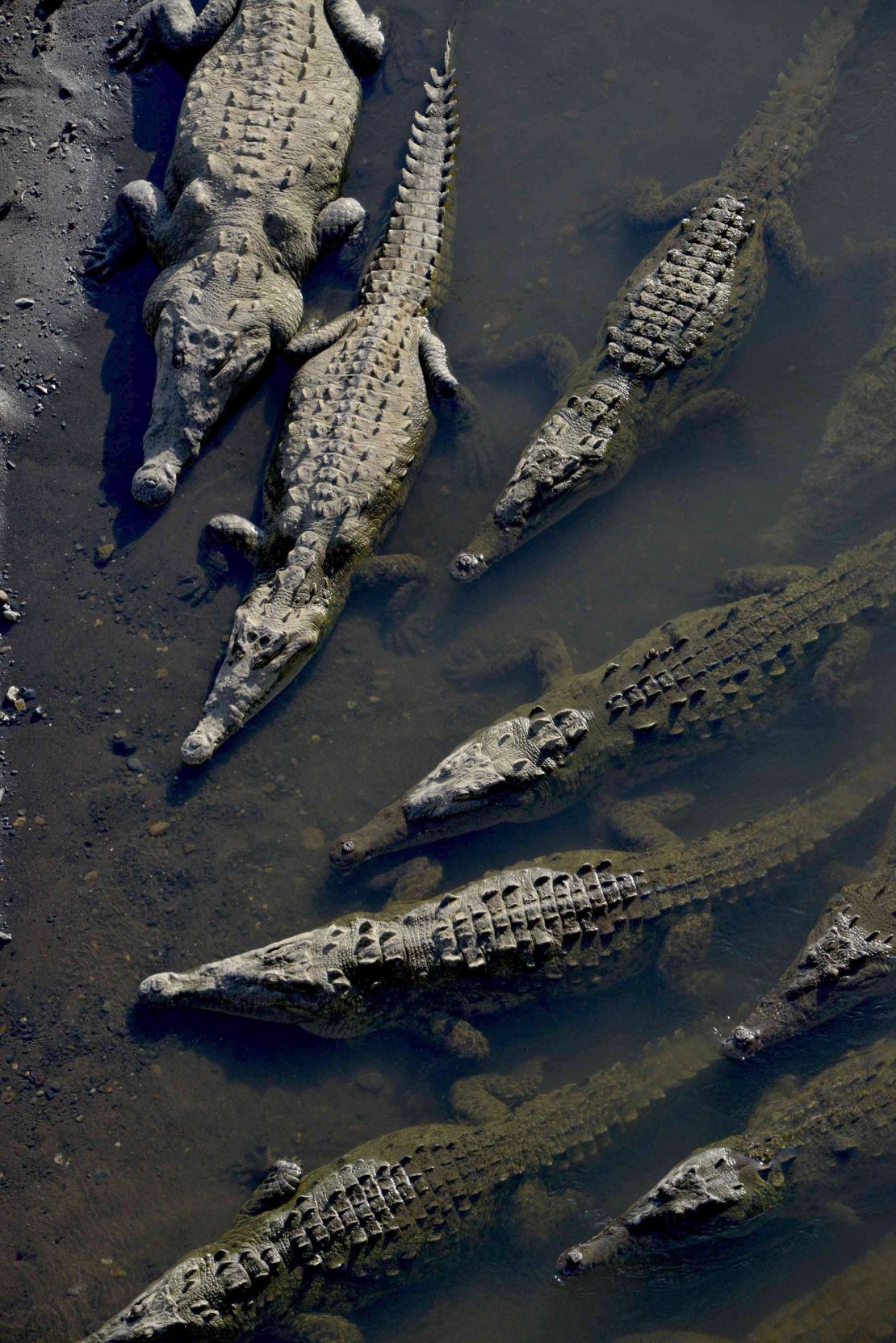Along the busy main highway between the capital of San Jose and the surfer-friendly beach town of Jaco is Costa Rica’s most unusual tourist attraction.
On an otherwise unremarkable stretch of road, about 75 miles (121 km) west of San Jose’s airport and just a few miles from Carara National Park, an unlikely travel curiosity has sprung up.
Despite the cars whizzing past, dozens of onlookers are gathered along both sides of a small bridge to peer down at the brownish water below.
But this isn’t because the view is so gorgeous it simply must be documented for social media. This main bridge over Tárcoles River is known as “puente de cocodrilo,” or “crocodile bridge.”
The name isn’t a metaphor.
Most days, at least a dozen American crocodiles, easily stretching to 13 feet (four meters) long and weighing hundreds of pounds each, hang out under the bridge to sun themselves. The species is noted for its ability to walk on four legs – not just slither – and for its greenish-gray skin.
The crocs, who can be found as far north as southern Florida, like salty or brackish water like that found in the Tárcoles River.
The scare economy
Now, a mini economy has sprung up around the bridge, with vendors selling stuffed crocs and other souvenirs to the tourists who stop for photo ops. There are also several restaurants with “Cocodrilo” in the name, plus a Crocodile Safari boat for particularly brave travelers who want to get even closer to the dangerous creatures.

This stretch of road, Pacífica Fernández Oreamuno Highway, is one of the busiest in the country, as it links Costa Rica’s biggest airport and many of the popular beachside communities along the Pacific coast like Quepos and Playa Hermosa.
It is named for Costa Rica’s inaugural first lady, whose husband President José María Castro Madriz held the country’s top office for two separate terms in the 19th century.
The ethics of animal tourism
Most of the travelers who stopped to see the crocs in Costa Rica were taking photos from far away and doing their best not to interact with the reptiles. It may have been out of respect – but it may have been out of pure fear, since crocodiles like the ones at Tárcoles could easily take down a human being.
So far, the area has not reached a boiling point in terms of overcrowding, possibly because there are so few accommodations in the area – Tárcoles tends to serve as a place to get out and have a leg stretch and a snack rather than a final stopping point.
Currently, there are no signs advising visitors on how to behave around the crocodiles.
But that may not last forever.
While it’s not unusual for people to travel the world in hope of viewing exotic animals – zoos, anyone? – the question of how best to interact with wild animals while not destroying a habitat or affecting the environment is a challenging one, especially when social media is involved.
In 2018, the Australian state of Tasmania had to post warnings in a nature park reminding visitors that despite their cuteness, fuzzy wombats are still wild animals who shouldn’t be hugged for Instagram.
In the United States, a woman visiting a zoo in Arizona was attacked by a jaguar she was taking a picture of. She survived the incident, but issued an apology to the zoo for going against their guidelines.









